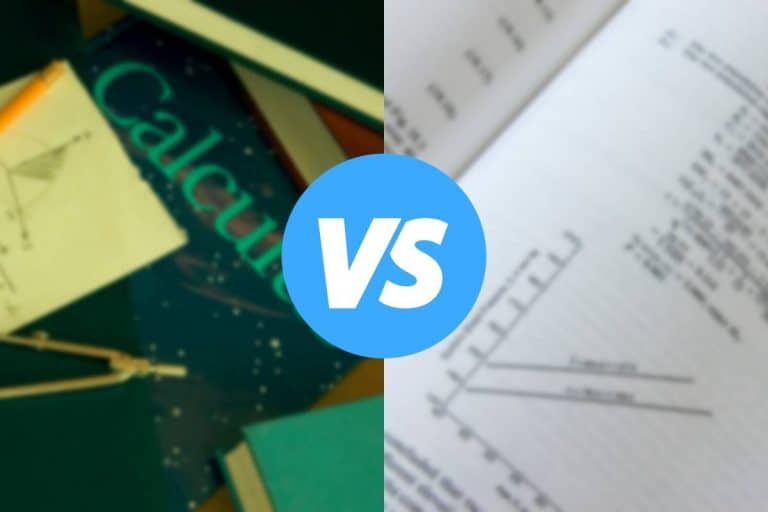Can You Take Anatomy and Physiology at the Same Time?
Undergraduate pre-med students or those who intend to enter the medical field will probably need to take anatomy and physiology at some point. Taking care of human bodies requires an intimate understanding of what makes them tick. If you have to take both of these classes, is it possible to take them both at the same time without getting hopelessly confused?
You can take anatomy and physiology at the same time. These subjects overlap, so you need to keep detailed notes, so you don’t get confused. However, you might find it helpful to take a basic anatomy class first and then physiology second.
This article will outline the difference between classes in anatomy and physiology and discuss when it’s okay to take them at the same time. So let’s get started.

Anatomy & Physiology: What’s the Difference?
Anatomy & Physiology are distinct studies that refer to different things. Anatomy refers to the structure of the human body, while Physiology refers to the operation or function of the human body.
Source: BioDifferences
Anatomy classes focus on the building blocks of the body.
For example, if you’re studying the human eye, you will learn about the cornea, the iris, the lens, and the sclera. Or if you’re studying how the endocrine system works, you’ll learn about how the hormones work, as well as your metabolism.
Physiology classes focus on how the building blocks of the body interact to make a functioning human being. Studying the eye in physiology class will bring you to discussions on how the eye gives you sight and different things that can go wrong with the eye.
Note that you may dissect cadavers or analyze the human body post-mortem in other ways in anatomy class, which you won’t ever do in a physiology class.
That’s because you can study anatomy in a dead body, but physiology no longer applies.
Think of it this way: Even a dead body still has all of its anatomical parts. However, it no longer functions, rendering a physiological study useless. You cannot study the function of an inanimate object.
What Order Are These Classes Usually Taken In?
Usually, anatomy is taken first, followed by physiology. A guidance counselor or a pre-med student may advise against taking these two classes at the same time. This is because anatomy gives you the linguistic tools to understand the content in physiology.
When you think about it, this makes perfect sense. In order to understand how different body parts interact, you need to know what these parts are.
There are often different levels of anatomy classes. For instance, some colleges offer Anatomy I, Anatomy II, and Anatomy III. To fully comprehend physiology classes, some professors may ask you to take at least Anatomy I first.
However, physiology does not necessarily need to be taken after anatomy. That may tempt some students to take them at the same time. But is this a bad idea?
Can I Take These Classes at the Same Time?
You can take both classes at the same time. If you’re facing a challenging load of classes or have some other unique scheduling conflict that forces you to take an anatomy and physiology class the same semester, it’s certainly possible. The best thing you can do for yourself is get organized.
Here are some tips for students who will be taking these two classes at the same time:
- Keep your notes straight. This is the biggest issue for students who are taking these two classes. Because anatomy and physiology share the same medical jargon, you can easily take the wrong notebook to class or study the wrong notes for a test. Clearly label the top of each page in your notebook and every assignment you turn in.
- Color-code the classes in your agenda. Are you the type of person who religiously writes down your homework in your planner? Then consider writing down your assignments for these two classes in different colors. That way, you can quickly jot down “Eye test” and know which material you have to study just from the green ink.
- Ask lots of questions in both classes. Even if you’re a naturally shy person, taking two similar classes at the same time will force you to speak up. Get comfortable asking clarifying questions of your professor to make sure that you understand things in the correct context for their class.
Also, remember that anatomy and physiology are sometimes combined into just one class, especially at smaller universities.
Taking the two subjects at the same time might not be a choice at all, but a necessity. If that’s the case for you, your professor should do a good job of keeping the difference between the two straight.
Topics That Are Covered In Anatomy Classes
Here are some of the subjects you may cover in an anatomy class:
- Names of bodily systems.
- Names of body parts.
- Diagrams of the body.
- Dissection of cadavers and animals.
Note that these subjects mostly have to do with classification and naming. You’re not looking into how these parts work, just at what the parts are.
Topics That Are Covered In Physiology Classes
On the other hand, here are some of the subjects you might cover in physiology:
- Bodily systems’ functions.
- Bodily systems’ interactions.
- How to repair bodily systems.
- How to mimic bodily systems.
Not only will you cover how these systems work, but you will begin to look at how this understanding helps doctors and nurses heal their patients.
Final Thoughts
If you’re considering taking an anatomy and physiology class simultaneously, make sure that you’re extremely organized with your notes and materials for each class.
There are plenty of tricks for pre-med students with hectic schedules who just want to get anatomy and physiology out of the way. Knowing the difference between the two is half the battle.
Anatomy and physiology are not the same things, but they are closely related. If you keep your classes straight, you might even find that your understanding of one enhances your understanding of the other.
Recommended Reading:







